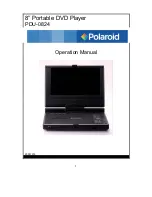
INSTALLATION AND SERVICE INSTRUCTIONS
4211-1661 Rev A
01/28/2022
Page
8
of
17
SECTION 1: MOUNTING THE STEAM GENERATOR (continued)
1. WALL MOUNTING:
a)
Remove the side cover. Note the location of the mounting holes on
the back of the generator. The screws must set directly into studs
or equivalent supports. Drill pilot holes on 14-1/2
” (368 mm) centers
and install the two #10 1½" screws, provided.
See at right
.
b)
Carefully hang the generator on the two screws. Tighten the
screws.
c)
The generator may be further secured with two screws mounted on
the same 14-1/2
” (368 mm) centers as shown.
d)
Replace the front cover with its four screws.
2. FLOOR MOUNTING:
a)
In general, the width of the unit allows it to sit on a shelf, across the
ceiling joists or on a floor. The generator must be restrained from
moving. Normally, the piping will provide adequate support. If not,
additional support must be provided.
b)
All floor installed generators must provide for routine draining of the
tank and for draining the safety v
alve’s outlet.
SECTION 2: WATER QUALITY REQUIREMENTS
The nature of a boiler or steam bath generator requires testing of the
feedwater to avoid potential high concentrations of impurities which can
cause a deposit or scale to form on the internal surfaces. This deposit
or scale can interfere with the equipment's proper operation and even
cause premature boiler or generator failure. Concentration of impurities is generally controlled by treating the
feedwater and or "blowing down" the generator or boiler when it is not heating. The "blow down" process involves
removing a portion of the tank water with high solid concentration and replacing it with makeup water.
This is particularly important in areas with high calcium levels and other water quality problems. Calcium build-up
can cause poor steamer performance and damage the heating elements!
Be especially careful to prevent foaming in the steamer’s water! Foaming water will affect the water level
measuring systems in steamers and boilers, causing operation problems and possibly leading to early element
failures!
To ensure proper operation, the water supply should be tested prior to operating the equipment. There are several
treatment processes which can be used if you have a problem with hard water. A local reliable water treatment
company can recommend the appropriate treatment if required. The recommended feedwater quality is listed on
the next page.
Recommended Feedwater Quality
Hardness
10
– 30 ppm - (0.5 - 1.75 gpg)
T-Alkalinity
150
– 700 ppm - (8.75 - 40.8 gpg)
Silica Range
15
– 25 ppm - (1.28 - 1.45 gpg)
PH (strength of alkalinity)
10.5 -- 11.5
WALL MOUNTING
14.5” [368 mm]
14.5” [368 mm]









































